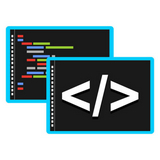Python多线程通过threading模块实现,适用于I/O密集型任务。尽管GIL限制了CPU密集型任务的并行执行,但在I/O操作时会释放GIL,允许多线程并发提升性能。使用Lock可避免共享数据的竞态条件,确保操作原子性;而queue.Queue提供线程安全的数据交换机制,适用于生产者-消费者模型等场景,降低线程耦合,提升程序健壮性。

Python实现多线程主要通过内置的
threading
在Python中实现多线程,最直接的方式是使用
threading
threading.Thread
import threading
import time
def task_function(name, delay):
"""一个简单的线程任务函数"""
print(f"线程 {name}: 启动...")
time.sleep(delay)
print(f"线程 {name}: 完成任务。")
# 创建并启动线程
thread1 = threading.Thread(target=task_function, args=("Worker 1", 2))
thread2 = threading.Thread(target=task_function, args=("Worker 2", 3))
thread1.start() # 启动线程1
thread2.start() # 启动线程2
# 等待所有线程完成
thread1.join()
thread2.join()
print("所有线程已完成。主程序退出。")这段代码展示了如何创建两个独立的线程,它们各自执行
task_function
start()
join()
很多人一提到Python多线程,就会立刻想到GIL(Global Interpreter Lock),并且认为它让Python的多线程“形同虚设”,无法实现真正的并行。这其实是一种误解,或者说,是不够全面的理解。
立即学习“Python免费学习笔记(深入)”;
GIL确实是CPython(最常用的Python解释器)的一个特性,它确保在任何时候,只有一个线程能够执行Python字节码。这意味着,即使你的机器有多个CPU核心,CPython的多线程在执行CPU密集型任务时,也无法真正地并行利用这些核心。它更像是“并发”而非“并行”——线程们轮流获得GIL,快速切换执行,给人一种同时进行的错觉。
那么,GIL的存在是完全的弊端吗?并非如此。GIL的设计初衷是为了简化CPython的内存管理,避免复杂的锁机制,从而让解释器本身更易于开发和维护。没有GIL,Python对象的引用计数将变得非常复杂,每次操作都需要加锁,反而可能导致性能下降。
关键在于,GIL在I/O操作(如文件读写、网络请求)时是会被释放的。当一个线程需要等待外部资源时,它会主动释放GIL,让其他线程有机会获得GIL并执行。这就是为什么Python多线程在处理I/O密集型任务时依然能发挥巨大作用,显著提升程序的响应速度和吞吐量。它不是让你的CPU跑满所有核心,而是让你的程序在等待外部资源时不至于“卡死”,能够同时处理其他任务。所以,对于网络爬虫、Web服务等场景,多线程依然是Python的利器。
在多线程环境中,多个线程可能会同时访问和修改同一份数据。如果不对这些操作进行适当的控制,就可能出现所谓的“竞态条件”(Race Condition),导致数据不一致或程序崩溃。这就像多个人同时去抢一个座位,如果没有规则,结果会一团糟。
为了解决这个问题,我们需要引入同步机制,其中最常用、最基础的就是锁(
threading.Lock
来看一个经典的例子:多个线程对一个共享计数器进行加一操作。
import threading
import time
shared_counter = 0
# 创建一个锁
lock = threading.Lock()
def increment_counter():
global shared_counter
for _ in range(100000):
# 获取锁
lock.acquire()
try:
shared_counter += 1
finally:
# 释放锁,确保即使发生异常也能释放
lock.release()
threads = []
for i in range(5):
thread = threading.Thread(target=increment_counter)
threads.append(thread)
thread.start()
for thread in threads:
thread.join()
print(f"最终计数器值(使用锁):{shared_counter}")
# 假设没有锁,会发生什么?
# shared_counter_no_lock = 0
# def increment_counter_no_lock():
# global shared_counter_no_lock
# for _ in range(100000):
# shared_counter_no_lock += 1
#
# threads_no_lock = []
# for i in range(5):
# thread = threading.Thread(target=increment_counter_no_lock)
# threads_no_lock.append(thread)
# thread.start()
#
# for thread in threads_no_lock:
# thread.join()
#
# print(f"最终计数器值(无锁):{shared_counter_no_lock}") # 这个值几乎每次运行都会小于500000在上面的例子中,如果没有
lock.acquire()
lock.release()
shared_counter
shared_counter += 1
为了代码更简洁和安全,Python推荐使用
with
def increment_counter_with_with():
global shared_counter
for _ in range(100000):
with lock: # 自动获取锁并在代码块结束时释放
shared_counter += 1除了
Lock
threading
RLock
Semaphore
Condition
Event
Lock
仅仅通过共享变量和锁来同步数据,对于复杂的数据交换场景,可能会变得非常笨重和容易出错。当一个线程需要将处理结果传递给另一个线程,或者多个线程需要协作完成一个任务时,线程安全的队列(
queue.Queue
queue.Queue
queue.Queue
queue.LifoQueue
queue.PriorityQueue
它们都是线程安全的,这意味着你可以在多个线程中安全地调用它们的
put()
get()
一个典型的应用场景是“生产者-消费者”模型。一个或多个生产者线程负责生成任务或数据,并将其放入队列;一个或多个消费者线程则从队列中取出数据进行处理。
import threading
import queue
import time
# 创建一个线程安全的队列
task_queue = queue.Queue()
def producer(name, num_tasks):
"""生产者线程:生成任务并放入队列"""
print(f"生产者 {name}: 启动...")
for i in range(num_tasks):
task = f"任务-{name}-{i+1}"
task_queue.put(task) # 放入队列
print(f"生产者 {name}: 放入 {task}")
time.sleep(0.1) # 模拟生产耗时
print(f"生产者 {name}: 完成所有任务生产。")
task_queue.put(None) # 发送结束信号
def consumer(name):
"""消费者线程:从队列取出任务并处理"""
print(f"消费者 {name}: 启动...")
while True:
task = task_queue.get() # 从队列取出任务
if task is None: # 收到结束信号
task_queue.put(None) # 将结束信号再放回队列,通知其他消费者
break
print(f"消费者 {name}: 处理 {task}")
time.sleep(0.5) # 模拟处理耗时
task_queue.task_done() # 标记任务完成
print(f"消费者 {name}: 完成所有任务处理。")
# 启动生产者和消费者
producer_thread = threading.Thread(target=producer, args=("P1", 5))
consumer_thread1 = threading.Thread(target=consumer, args=("C1",))
consumer_thread2 = threading.Thread(target=consumer, args=("C2",))
producer_thread.start()
consumer_thread1.start()
consumer_thread2.start()
# 等待生产者完成
producer_thread.join()
# 等待所有任务被处理完毕
task_queue.join() # 阻塞直到队列中的所有任务都被get()并且task_done()
# 等待消费者接收到结束信号并退出
consumer_thread1.join()
consumer_thread2.join()
print("所有生产者和消费者已完成。主程序退出。")在这个例子中,生产者线程将任务放入
task_queue
task_queue.put(None)
task_queue.join()
task_queue.task_done()
以上就是Python怎么实现多线程_Python多线程编程入门指南的详细内容,更多请关注php中文网其它相关文章!

编程怎么学习?编程怎么入门?编程在哪学?编程怎么学才快?不用担心,这里为大家提供了编程速学教程(入门课程),有需要的小伙伴保存下载就能学习啦!

Copyright 2014-2025 https://www.php.cn/ All Rights Reserved | php.cn | 湘ICP备2023035733号